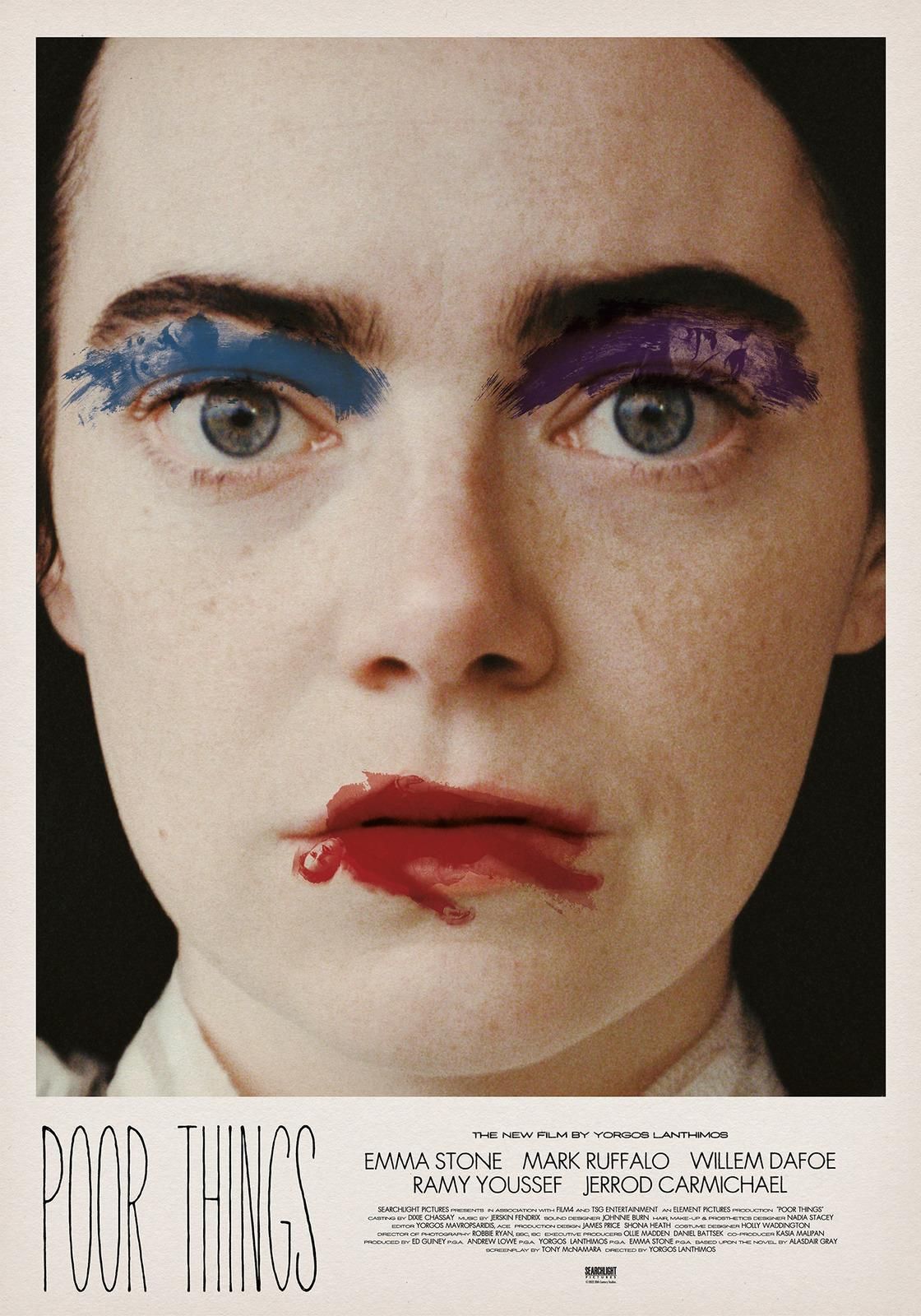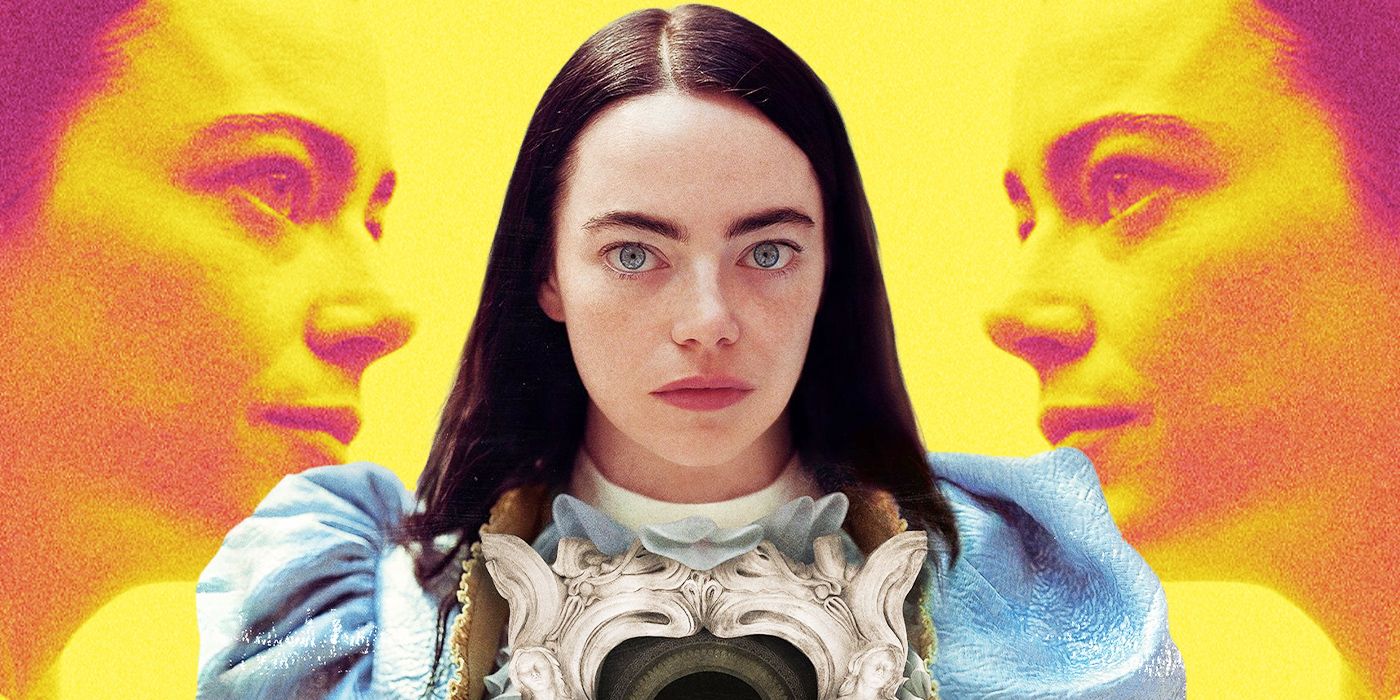The Big Picture
-
Poor Things
uses color to show Bella’s personal growth, transitioning from black and white to vibrant colors as she evolves. - Bella’s journey is reflected in the movie’s production, with color representing her changing perspectives and experiences.
- Director Yorgos Lanthimos uses camera tricks to visually highlight Bella’s development and unique perspective on the world.
Poor Things at its core follows the growth of Bella Baxter (Emma Stone), a young woman whose brain has been replaced with her unborn child’s. Director Yorgos Lanthimos utilizes perspective and color within Poor Things to represent this development, with contrast in the locations within the movie. The movie progresses from black and white to vibrant colors, and the design of the color at each stage of the movie reflects where Bella is in her personal growth. Poor Things tells so much of its story through its production, for which it won the Academy Award, and you can trace Bella’s journey purely through how the world around her is represented. Bella wasn’t the protagonist in the original novel, instead it was Max (known in the book as Archibald McCandless) who led the story. The change to using Bella’s journey to frame the movie’s structure is reflected in Lanthimos’ use of perspective and color and is what gives Poor Things its whimsical intrigue.

Poor Things
The incredible tale about the fantastical evolution of Bella Baxter, a young woman brought back to life by the brilliant and unorthodox scientist Dr. Godwin Baxter.
- Release Date
- December 8, 2023
‘Poor Things’ Starts in Black and White To Show Bella Baxter’s Re-Birth
The first third of Poor Things is spent in black and white, which could come as a surprise on first watch, as the movie has become synonymous with vibrancy and imagination. However, this directorial decision allows Lanthimos to show the narrowness of Bella’s world when we first meet her. Godwin Baxter’s (Willem Defoe) house is all Bella has ever known and the absence of color shows her lack of perspective. Thematically, Bella is confined to these four walls and her life is controlled by what Godwin (or simply “God”) does and doesn’t allow. Even the moments without Bella’s presence where God is lecturing are in black and white, which indicates that Bella is learning from God, recalling his lessons to her. Everything she knows, she has learned from God and in God’s house. Even Max (Ramy Youssef) is an extension of that world, as he is God’s student and follows God’s lead. When they travel outside of God’s house, he is still controlling Bella’s environment. The grayscale palette shows Bella’s freedom is carefully monitored. Lanthimos only made the decision to shoot in black and white ten days before filming began, which meant a lot of the set wasn’t designed to look stirring in monotone shades but rather to cater to colorized scenes. This furthers the limited scope of Bella’s world. Her room is bursting with color and texture, but her lack of comparison means she can’t fully realize this.
A sudden shift occurs when Bella travels to Lisbon with Duncan (Mark Ruffalo). The immediate contrast of color and vibrancy represents how quickly and aggressively her world is changing. Bella is being exposed to new ideas at a rapid rate and, therefore, Lanthimos uses the most dramatic color palette change of the whole movie. This reflects the huge intake of language and concepts for children, and how much of the world they learn at a young age – Bella in Lisbon is getting that same rapid growth and exposure. Lisbon is also the first time Bella gets the chance to explore on her own, so the vibrancy of color represents her discovery and the formation of her own perspective. The set of Lisbon combines futuristic technology with a vintage design to give a steampunk aesthetic. This technique allows Poor Things to feel reminiscent of the time period in which it is set but still showcases Bella’s sense of discovery with imaginative-looking transport and building design. The world is recognizable as our own, but has enough differences to highlight that it is all seen through Bella’s eyes.
Yorgos Lanthimos Uses Camera Tricks To Highlight Bella’s Development
As the setting moves from Lisbon to the boat, the color palette softens. Bella is still learning, but it is less erratic than it is when she is running around Lisbon alone. This showcases Bella’s growth in maturity, her knowledge is growing in complexity, and the speed is much slower and subtler. The most important moment for her development is when she visits Alexandria with Harry (Jerrod Carmichael). The color palette is much more understated, with hues of yellow and brown, indicating a tonal shift. Bella’s learning is less exploratory and is suddenly woven with knowledge of pain, as she learns of extreme poverty and suffering. The philosophical thought she has been developing is less ideological, and now she can see the real world consequences and this is paralleled by the muted tones. The camera pans out to show the steps Bella attempts to run down to help are broken, and it is impossible for her to reach those below. This wide shot not only represents the physical gap between the rich and the poor but also acts as a visual representation of the gaps in Bella’s knowledge. Her mind is made up of fragments, but she is still developing to piece it all together.
Lanthimos uses a camera lens that gives a fish eye appearance. The circular framing reflects this fragmented viewpoint Bella has and her limited scope in a manner that is less blatant than the monotone aesthetic of the movie’s start. It shows that Bella has grown, but her view of the world still has gaps. The lenses used within Poor Things also allow for a visualization of the innovative and strange way Bella views the world, and the way her abnormal anatomy means her perspective is distinctive and peculiar. Lanthimos and his cinematographer Robbie Ryan manage to create an experimental world that is inexplicable, vast and restricted at the same time. It creates a kinetic feeling of constant momentum which reflects Bella’s continuous growth.
The Use of Contrast in ‘Poor Things’ Shows Bella’s Changes
Moving to Paris sees a brighter screen appearance, Bella’s mind is full-formed and her vision is filled with clarity. She may not have complete knowledge of everything, but she is much more assured of herself and her beliefs. This allows her to move on after Duncan leaves and shows the first time she has existed without attachment to a male figure. Bella is liberated and can begin again, represented by the blanket of snow encasing Paris. This is a clean slate for her. Bella’s growth in this portion of the movie feels much more personal, it is not guided by others, and it is not due to rapid exposure. Instead, it is political, and considered. Bella becomes her full-self and returns to London vastly different from when she left.
The movie ends back at God’s house, but it is now in color. This is a striking contrast to the opening of the movie and is the most visceral representation of Bella’s growth. She now no longer sees the world through God, and is no longer reliant on him. Instead, Bella has come to help and nurse him through his final moments. God’s house is less vibrant than the starkness of the movie’s beginning, and it highlights just how limited Bella’s view was at the movie’s opening. Instead, the colors are soft and welcoming, and truly allow you to feel like Bella is finally metaphorically and literally home. The production and cinematography allow Poor Things to be an immersive journey into the growth of Bella Baxter and the visual decisions made by Yorgos Lanthimos utilize distinct colors and perspectives that represent that development.
Poor Things is available to stream on Hulu in the U.S.
























































![Key Metrics for Social Media Marketing [Infographic] Key Metrics for Social Media Marketing [Infographic]](https://www.socialmediatoday.com/imgproxy/nP1lliSbrTbUmhFV6RdAz9qJZFvsstq3IG6orLUMMls/g:ce/rs:fit:770:435/bG9jYWw6Ly8vZGl2ZWltYWdlL3NvY2lhbF9tZWRpYV9yb2lfaW5vZ3JhcGhpYzIucG5n.webp)


















